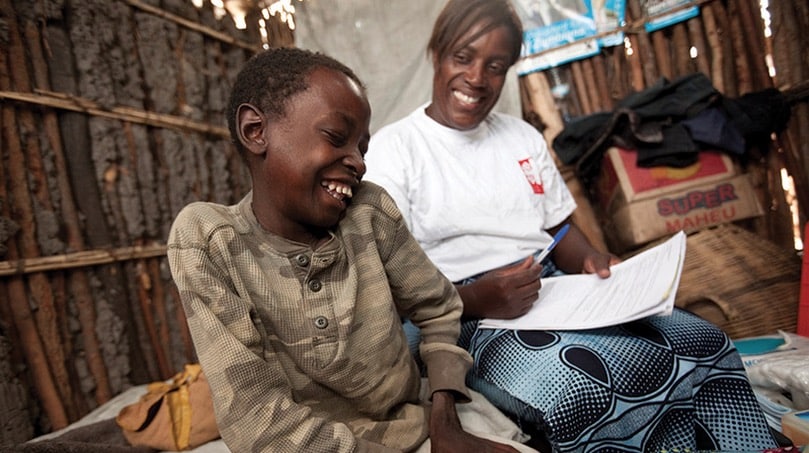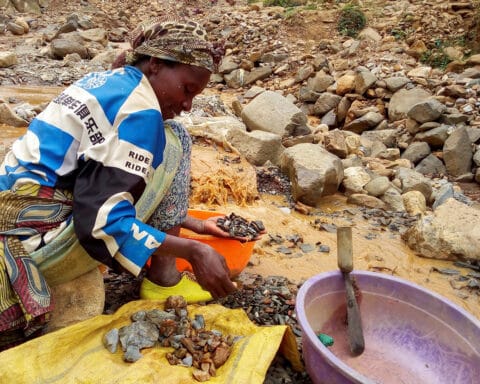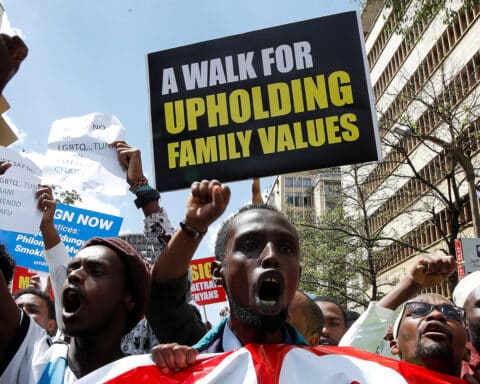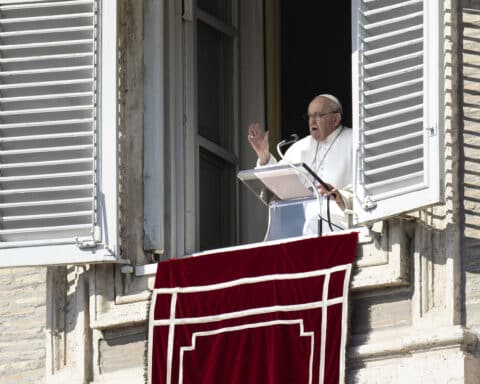Catholic Relief Services has supported programs to fight the HIV/AIDS pandemic since the late 1980s, but it was not until 2001, when I arrived in Zambia to start up the CRS office, that I had my first real exposure to its impact. Zambia was, and is, a beautiful country of 10 million people (now 17 million) and every month 10,000 people were dying from AIDS.
Not long after I got there, I went to my first funeral. There were 12 open graves for the 12 funerals that were starting simultaneously, while the grave diggers dug more graves for the next round of funerals.
People were doing anything they could to help their families. Many had turned to one of the best jobs available — making coffins. Sometimes people with AIDS would buy their coffin to spare their family from debt. That coffin might be their only piece of furniture that hadn’t been sold to buy food. I saw people who slept on them.
There was also the effect on children. AIDS was killing people in their prime parenting years. All across Africa there were millions who had lost one or both of their parents. Many babies were born with the virus, half of them dying before the age of five. I was so moved by the courage and grace of teenagers I met who had stepped up to take responsibility for their families in what were termed “child-headed households.”
One sociological aspect of the disease is that it was taking out the educated, the middle class. AIDS was killing the people who were needed in the economy, including those needed to treat it: doctors and nurses and other health care workers.
PEPFAR game changer
As Catholics we knew we had to do something. At that point, we could bring people food, we could pray with them, we could be the face of love and concern, but we couldn’t offer them anything other than dying surrounded by people who cared. We couldn’t offer a chance at a longer life.
For a few years, treatments had been available in the United States and Europe, but they were around $10,000 a year for each patient. So we could only help people die with dignity. We could let them know we would be there with their families in the future. We could fight the stigmatization. And we could tell the Catholic life-affirming message of abstinence and fidelity to stem the spread. But we could not stop the death toll.
Two years later, everything changed. At his State of the Union message in February 2003, President George W. Bush announced the President’s Emergency Plan for AIDS Relief, better known as PEPFAR. It provided $15 billion over the next five years, mostly for treatment, but also to support children orphaned or otherwise affected by AIDS.
At the end of that year we put together our proposal. Our main partner was the University of Maryland, home to some of the top HIV/AIDS researchers in the world. Our partnership, known as AIDSRelief, eventually had responsibility for PEPFAR work in 10 countries, including Zambia. CRS did not have a lot of experience in clinical medicine, so we found partners around the world, many of them faith-based medical networks.
That was crucial because the anti-retroviral treatment for AIDS is a complex regimen of pills that must be taken on a consistent schedule. Wonderful parishioners visited patients to make sure they were taking their medications. That ministry to the sick was critical.
Light at end of the tunnel
There were many other challenges — upgrading hospitals and clinics, establishing record-keeping systems, creating pharmaceutical supply chains, putting together laboratories for testing, training physicians, nurses and lab technicians. Many said all of this could never be done in Africa.
But I saw it happen in Zambia: people beginning to realize that there might be light at the end of the tunnel, that there might be life instead of death. That was happening in every country where we worked. Every year, thousands and thousands more got treatment. Babies were born HIV-free. And orphans and vulnerable children grew up into productive, dignified lives.
Five years later, PEPFAR was renewed and expanded. And in the years after that, we began handing our work over to local partners. Through AIDSRelief, we had helped over 700,000 people, nearly 400,000 of them with anti-retroviral treatment. We had seen people come back from the brink of death to be healthy fathers and mothers, sisters and brothers. And we left behind stronger health systems wherever we worked and partners who are achieving even better results than we did.
The HIV/AIDS pandemic is not over, but the work of institutions around the world and of people of great heart who help their neighbors every day allow us to imagine its end.
Michele Broemmelsiek was chief of party for AIDSRelief from 2009-12 and now serves as CRS’ vice president for overseas operations.





